It is time! I finally have a Valve Index with thanks to supporter Scaine and it has genuinely blown a few braincells away with just how incredible an experience it actually is.
Unlike some, I wasn't originally sold on VR — at all. Partly because of the price factor, which is a genuine issue to adoption, especially with the more limited VR options on Linux with just the HTC Vive and the Valve Index. The big point was the idea of having a weighty device strapped to my face did not appeal to me. I stayed mostly away from it and didn't follow much - oh how wrong I have been all this time. It's simply like nothing else.

The Setup
I was expecting to come across lots of issues getting it all setup. Being much more than pleasantly surprised, it was click and play. Seriously, it can't get any easier than this. Read the instructions, plug everything in correctly and load the VR settings to calibrate things. After that, headset on and away you go. Okay, that's a slight lie. I did have one issue, which is audio not auto-switching to the headset but adjusting that quickly with PulseAudio Volume Control that makes it really easy to switch things around. Now that's all sorted and no problem.
Updating firmware for the Headset and both Controllers also worked perfectly. It tells you when an update is available, you click a button and it just does it. No fuss at all. Honestly, on an up to date Linux distribution - the SteamVR setup is ridiculously easy. You don't even have to opt into any Beta, or resort to anything on the command line, everything is nicely in the Steam UI.
System Specifications
- Distribution: EndeavourOS (Arch Linux)
- Kernel: 5.11.16
- Desktop Environment: GNOME
- RAM: 16GB
- CPU Model: Intel i7 5960x
- GPU Model: NVIDIA 1080 (v465.24.02 driver)
Technically, according to Valve's GitHub SteamVR is still a development release for Linux. So even though they don't seem to consider it properly stable for Linux yet, the situation is still technically extremely impressive. Whoever has been working on the Linux side of SteamVR at Valve - keep it up, you're doing awesome. VR overall is still pretty much in its infancy really and to have Valve support it like this on Linux is again amazing - when you think about the small user share of the operating system for the desktop.
I only have quite a small space to do my VR in too, and even here it works very well. Initially trying out the room scale, where you need to map out your area by walking around while holding down a controller trigger, it only just gave me the okay with a few gentle area tweaks. You don't actually need a space that big which was something of a surprise. That said, I nearly punched out a window and walked into a wall and a door - so standing-only it is with not too much movement. Even so, the standing option still has quite a bit of leeway on foot movement.
Don't have much more to say on the setup, because there's really not much to it. Plug it in, install SteamVR and some games and that's pretty much it overall. No fancy steps needed, because Steam handles everything rather gracefully for you it's just so damn impressive.
Notes for streamers and video content creators
If you're going to capture footage with OBS Studio, ensure you have unchecked the option to capture your mouse cursor. I found that out the hard way with ruined footage due to a nice big cursor in the middle of it. See also: our first VR livestream VOD.
Additionally, it's better to capture the VR View, rather than the game window as you can set it to capture both eyes to give viewers a much wider angle and it just looks better. For both eyes it does give a slight transparency bar towards the centre where it merges the two but it's still fine.
To access it, open the menu from the SteamVR Status box and hit Display VR View. This window seems to have some weird non-standard behaviour and doesn't correctly fill the screen for capturing, so you can force it to adjust with a simple command like this (thanks Corben!):
WIN=$(wmctrl -lG | grep VR\ View | awk '{ print $1 }'); wmctrl -i -r $WIN -e 2,0,0,1920,1110
Weirdly, you need to move the VR View window around, at least once, for that to actually work first.
Side-note: during all this I finally found a workaround for when OBS Studio decides to give a black screen when capturing some windows. ALT+F2 and enter "r" to reload GNOME Shell, magically then OBS can capture the window it previously showed as just a black screen.
The Feels
As someone who doesn't have the best vision and has to wear glasses, that was something I was concerned about. As it turns out, not an issue. You really can wear glasses quite comfortably with the Index headset squeezed on tight. Valve clearly though about many types of people and faces when designing it which is quite a big relief. Thankfully it means playing for longer periods is possible without major eye-strain. Although, you can also get special lens cover inserts through VR Optician to match the strength of your glasses which is certainly interesting.
You're absolutely going to want some lens protection though! The Valve Index can be easily scratched, so get some covers on it. I went with the Valve Index Lens Protector from Prettygood3d on etsy, along with a simple silicone cover for the Face Gasket so it can be kept clean and fresh a little easier.
Something else that's been really freeing for me are the controllers. I have a permanent injury in my right wrist, which is painful often and using a mouse or a gamepad can really aggravate it. The Index controllers though? No problem, there's no pain at all. It's strapped to you and moves with you, it's been so freeing.
Game Selection
Right now, the selection of games is limited — for Linux especially. Currently there's around 2% of people on Steam that have a VR set hooked up (Steam Hardware Survey), so we're clearly talking about a niche within a niche here so it's not exactly surprising. Thankfully, Proton exists which saves the day here pretty much. Without it, there wouldn't be much VR at all on Linux and considering how it's a small market inside the clear niche, it's going to stay that way for a while to come.
Games tested and working well so far include:
- Half-Life: Alyx - native
- Groove Gunner - native
- Beat Saber - Proton
- Pavlov VR - Proton, although that I refunded because frankly it felt poor. Guns vanishing all the time made it a nuisance to play and so just wasn't fun. Seems to be by design too, quite a lot of complaints about it around.
- Spider-Man: Far From Home Virtual Reality - wonderful for kids.
Initial Gaming Thoughts
Where to even begin on how it feels to play? I now understand why people suddenly started asking for VR versions of games. I have joined the ranks of people wanting more full VR experiences. VR is something you truly cannot appreciate unless you have actually tried it for a few hours - there's no really good way to describe it, it just transforms everything.
Movement is the worst part to get used to as a newer user. Thankfully, when you buy the Valve Index they kindly throw in a copy of Half-Life: Alyx, which has different movement modes built in. For new VR users, starting with the Blink movement mode is a must, allowing you to quickly teleport to a location. The first time I tried the traditional stick-based push to walk movement mode, I nearly puked everywhere, it was really quite horrible to see everything moving like that so close to my face without me actually doing the walking. Like most things though, you do eventually get used to it and quicker than expected but it still makes me feel a little dizzy when used too much. So, Blink is the best to avoid sickness.
It's such a convincing experience in fact, that I often get vertigo when looking down from a height in VR. The experience is certainly an impressive one. Overwhelmingly impressive when you first start that is. I've bumped into many things, nearly punched through a window and more, it's an experience that simply cannot be compared with when it comes to gaming - but you do need the right games for it.
Half-Life: Alyx, for example, is the gold standard on a full VR story experience. Not surprising though, if it was anything less people would be seriously questioning why they got the Valve Index. The graphics are simply fantastic and the gameplay is brilliant. It's very much a Half-Life game down to the core too, everything about it reminds me of Half-Life 2 but turned up to 11. At times it's so tense you might pop, other times it's just wondrous to walk around a bit and interact with various parts of the environment. An absolutely extraordinary game, and it's pretty darn scary too. There's been numerous times I've completely forgotten how to reload in a total mad panic.
Enjoy a few minutes of me failing in the below video:

Direct Link
The tenseness of gaming in VR can be quite a strain too. Stretching first is a must, as is trying to remember not to stiffen up. Playing faster paced-games like Groove Gunner, Beat Saber and the likes can easily make you sort-of lock up. Keep moving a little otherwise, you're going to ache. Bending your knees a little is a must. I forgot once or twice and felt the pain after a session.
What I am most surprised by is the performance. With my NVIDIA 1080 (as our 2080 is in a different machine), it's been very smooth with the titles I've put some time into. I was fully expecting to need to pull out the 2080 for this but so far it hasn't been needed.
Technical Issues
There are some technical issues to be aware of though. The situation is far from perfect. For starters, sometimes SteamVR as a whole just dies on you. You might be trying to load a game, and find yourself stuck in the loading area limbo and - nothing happens. On top of that, the in-game SteamVR overlay often just doesn't work so you have to restart SteamVR until it does. Thankfully, restarting SteamVR is a pretty quick experience so it's not too much trouble but definitely still very very annoying.
Out of the box the microphone will also not work, this is an issue with Pulse Audio it seems. Opening this file:
/etc/pulse/daemon.conf
And setting this:
default-sample-rate = 48000
Will fix it and then you have the working microphone. However, some times the microphone seems to just fail to initialize or be picked up by Pulse Audio. Restarting SteamVR and the headset seems to fix that. Doesn't happen often but it does happen.
Like taking screenshots? Well, here's another problem, you can't take them with the controllers. F12 on the keyboard works but it seems still years later it's not working as it should be and that's not helpful when you have a headset on. Want to adjust your volume in the SteamVR Overlay? That doesn't work either, also hasn't for years.
Games played through Proton often seem to have audio crackling too. I'm not entirely sure yet on a good solution to properly solve it. Setting the commonly given "PULSE_LATENCY_MSEC=60 %command%" launch option does nothing, restarting Pulse Audio also does nothing. The only way I've found is having Pulse Audio Volume Control open. It would be good if the root cause of this issue could be found, as it's the single most annoying thing about SteamVR on Linux right now.
If you're a Twitch or YouTube livestreamer, getting the chat to show up in your HMD is not exactly click and play. Sadly, there's currently no really simple way to do it. I'm currently waiting on Collabora upgrading xrdesktop for GNOME 40, so I can bring over a transparent chat window overlay. Once that's working, I'll be testing and reporting on that.
Lastly, not a technical issue but something to know - the Base Stations give off quite an annoying high-pitched noise when turned on. Thankfully though it is quite quiet but I imagine for some it could give headaches but you don't hear it when you have even some quiet music on so it's not too bad. The Base Stations on Linux won't power down when you're done. Not a big problem but the sound is annoying, you can try something like the SteamVR Utils for Linux or just have them in a switchable power-socket which is faster than any powering up/down via software.
So, there's plenty of rough edges you need to be aware of when doing SteamVR on Linux. I've covered a few on the main annoying bits here.
More thoughts
Is VR like this the future of gaming? Originally, I would have laughed at anyone who said yes. Now though? I'm not so sure. It's so ridiculously immersive that you forget you're even wearing a headset. To the point that I've punched the headset a few times when bringing my hands up — woops. Still, a high price and wiring everywhere are two issues I hope are eventually solved to make it the future. More headsets are coming out at lower prices which is good and wireless is coming along so eventually they might be a much smaller issue. Hopefully something like Monado can be a standard for getting more headsets working on Linux.
Also, once you've got your full kit, that's not the end of your expenses. Oh no. You're going to want replacement face covers, or a cover to put over your existing one to protect it further. The previously mentioned lens covers to protect them too, the high of buying up all the VR games you can get your hands on to experience more of it, controller covers, perhaps even a pully system to hold up the wire from the floor and the list goes on. Prepare to splash out and get seriously broke.
Playing in VR definitely makes going back to flat/pancake (or whatever you want to call it) gaming feel…weird. Everything else now feels so far away and moving a mouse to turn a camera? What is this, the stone ages? I need more VR, MORE! That said, I can't imagine how sweaty and gross an experience it's going to be in the hotter months of the year, and in the UK we don't really have houses with air conditioning but we do have plenty of insulation so we're not exactly ever prepared for warmer times.
While my time with it is limited so far (SteamVR says ~33 hours clocked), it's already safe to say that VR on Linux with the Valve Index seems pretty fantastic. I do hope many more people get to experience it. It's a complete brain and senses overload, it's amazing.
For the lighthouses switching on/off, I recommend you follow my little guide on the GOL forums: https://www.gamingonlinux.com/forum/topic/4609I ended up downloading an app on my phone called Lighthouse PM for turning on / off the Lighthouses. Seems to work okay.
I just click a button on my dash and it toggles them on/off, within about 1 second of the click. Once every few months, it can fail to toggle properly, but that's easily fixed by simply powering them off/on at the plug to get the naughty lighthouse back in sync.
Do I still play in VR after 6 months? Definitely, although mainly in cockpit mode these days - Elite, Automobilista, or Overload. It definitely feels like a slight chore to set up the room... although I bought BoxVR for some exercise, and Liam has gotten me back into playing Groove Gunner by shaming me on Discord!
Someone mentioned how amazing Elite is, but suggested you need a HOTAS. I guess that would help, but as a touch typist, I just play with mouse/keyboard and it's still an incredible experience. Like, jaw-dropping. Boosting around the outside of a carrier, or station, while looking through the upper canopy of your starship... it's just... well, clearly indescribable!A proper joystick+HOTAS would be amazing, but it's just money money money, innit!
Corben, if you have that headset issue, I also suggest you try simply unplugging the HMD using its quick release plug. Plugging it back in and restarting SteamVR seems to fix any issues I have with the headset. But tbh, I've only had HMD issues... twice? Maybe?
Finally, Liam, yeah, starting Pulseaudio often fixes crackling, but sometimes it doesn't for me. Rare, but on those occasions, I found that stopping SteamVR, then doing asystemctl --user restart pulseaudio
...will do the trick (although you'll probably have to re-select the HMD sound output again).
It'll be nice when these little issues, and the others you mention in the article, are actually addressed, because they do genuinely present a small barrier to that "can I be bothered setting it all up" factor that can see you just playing something else instead!
But a year in (for me) and I still love VR.
"No ragrets"
Once in a while I try it at my cousin.
But for now, the price for entry is too high and I am also waiting for the resolution to improve and to have less wires and all that.
But the experience is amazing though, especially horror games.
The sense of presence rocks.
But the games I actually play now I'm not sure would really be changed much by VR. Like, I'm not sure Stellaris or Civilization would be a lot different in VR.
I am kind of interested in VR . . . I'm mostly curious about the idea of boxing or swordplay games where you're, you know, pretty much really doing that stuff.
But the games I actually play now I'm not sure would really be changed much by VR. Like, I'm not sure Stellaris or Civilization would be a lot different in VR.
I think Moss really showcases what tactical/2D games could be in VR - that skyhigh view, intuitive control, combined with an absolute flood of information all around you, and instead of clicking to see that information, you simply glance over to where it lives... that's pretty cool.
But I agree - is it cool enough to entice you to put the headset on, turn on the lighthouses, and set up your audio just to play in VR? I have my doubts. The chances would go up significantly if it were designed for VR from the outset, I think though.
VR has two ace features - immersion and tactile interaction. If the game makes use of those, VR is absolutely stunning. But just translating an FPS game, or a strategy game from 2D to VR... that will leave most people cold.
One of the oldest selling arguments used in the market is when the salesman or saleswoman tells you if you heard people don't like this or that is because they didn't try it and if they did they didn't try it enough.
Again Liam used it here.
It seems people who don't like pasta are because they haven't eaten enough quantity of pasta.
Or People who don't like Baseball is because they haven't played enough hours.
Or if people do not like this product is because they haven't used it enough.
Despite VR is expensive it is not hard to find a mall or a videogame store without VR devices in an exhibition, so I think maybe, just maybe, people actually tried enough, and even if they like they see it as some sort of device one would be using for a few days then going back to easier to access experiences, not talking about money, but the fact that taking a cellphone/joystick in your hands is WAY EASIER than strapping things to your hands or head.
So maybe people had their VR time and they found it doesn't worth 1000$ plus a good enough PC yet, even if this thing gets as low as 100$, playing on mobile will still be easier. At least in mobile gaming, Linux is the world leader.
The future of gaming? It is already here, it is mobile gaming.
It is a matter of time the converts get bored of preaching this new uncomfortable new belief to get back to their old religion. Happens almost every time.
Have a good day.
Are you seriously comparing a next generational, niche, and groundbreaking technology (VR) to gaming on the go (mobile) and claiming that mobile gaming is the future?
You don't like VR. Got that loud and clear. And sure, "gaming for the masses" is cheaper, more accessible and will generate more revenue. No arguments there.
But enjoying this absolutely cutting edge technology isn't about being accessible, or cheap. It's about experiencing something entirely new, things that literally cannot be experienced without high resolution, high FPS, low latency headsets with precise head tracking and hand tracking (and even finger tracking).
It's all the more laughable to me personally, since I've tried very hard to enjoy mobile gaming over the years and yet I find it a poor quality substitute every time. Even the rare cases where it works, it works better when it's NOT mobile: Kingdom Rush games are better on PC, and The Room games are better in VR. Sure, I can enjoy those games on the bus on my mobile, but I'd rather be playing them differently. Mobile gaming is convenience crossed with compromise. It has its place, and for many, it's all they care about, and that's fine.
That's not what this article is about.
Finally, Liam, yeah, starting Pulseaudio often fixes crackling, but sometimes it doesn't for me. Rare, but on those occasions, I found that stopping SteamVR, then doing a systemctl --user restart pulseaudio
...will do the trick (although you'll probably have to re-select the HMD sound output again).
Don't ask me how or why, but starting pavucontrol before anything else and keeping it running prevents the audio crackling/breakup/dropout in steamvr for me. I've added it to autostart and haven't had the crackling since ...
Last edited by poisond on 11 May 2021 at 8:33 am UTC
One of the oldest selling arguments used in the market is when the salesman or saleswoman tells you if you heard people don't like this or that is because they didn't try it and if they did they didn't try it enough.It is of course an editorial / initial thoughts post, with the contents being my opinion. It's all highly subjective of course. However, I did make it clear I was previously not even remotely convinced by it, after trying it I am. It's not a case of "not trying enough", it's a case of not understanding how good it is until you actually try it. Quite a simple concept.
Again Liam used it here.
The future of gaming? It is already here, it is mobile gaming.Entirely different market, entirely different experience. To compare them is frankly laughable.
It is a matter of time the converts get bored of preaching this new uncomfortable new belief to get back to their old religion. Happens almost every time.
Are you seriously comparing a next generational, niche, and groundbreaking technology (VR) to gaming on the go (mobile) and claiming that mobile gaming is the future?
Whenever the topic is VR there's always guys like these who for some reason have this urge to "call us out" for being so wrong and disillusioned. It's even unclear to me why they are so eager to tell us, but I have come to the conclusion that it simply must be plain old envy kicking in.
I just leave them be. They only tend to get more extreme if their opinions are challenged in a dialogue.
Last edited by Beamboom on 11 May 2021 at 9:32 am UTC
Don't ask me how or why, but starting pavucontrol before anything else and keeping it running prevents the audio crackling/breakup/dropout in steamvr for me. I've added it to autostart and haven't had the crackling since ...
Aha! Now this is interesting. I always fire up pavucontrol when I am about to do a VR session because I usually need to change audio device to the headset - this might be why I too never have these crackling issues then!
because I usually need to change audio device to the headsetYou mean the HDMI port on nvidia?
I have a small script/system unit to auto switch. Can share if you want ^^
because I usually need to change audio device to the headsetYou mean the HDMI port on nvidia?
I have a small script/system unit to auto switch. Can share if you want ^^
Yup! It *used* to automatically switch to the headset when it was activated, I have zero idea why it stopped doing so. But it'd be interesting to see your script, yes please!
Another thing that used to work but no longer do, is that the SteamVR was activated whenever I turned on one of the hand controllers. Just turn'em on, put on the headset and off I went. No more so. I have to start SteamVR in the Steam client.
Last edited by Beamboom on 11 May 2021 at 9:22 am UTC
But it'd be interesting to see your script, yes please!https://pastebin.ubuntu.com/p/5t87cxkCHZ/
Thanks for the article. I'm glad you like it so much!
Might sound dumb, but since this is hardware, does it "just work" in Linux for any VR game, or is it Steam exclusive? (Ie, will work on non steam games or with out steam at all)?
Well, basically there are no VR games for the Linux desktop outside of Steam. But yes, right now the SteamVR headsets require Steam to run even for software launched outside of Steam itself.
There is semi-functional work ongoing to make it possible to use HTC Vive and Occulus headsets without SteamVR via the OpenHMD and related projects though.
Thanks for the article. I'm glad you like it so much!
Might sound dumb, but since this is hardware, does it "just work" in Linux for any VR game, or is it Steam exclusive? (Ie, will work on non steam games or with out steam at all)?
Well, basically there are no VR games for the Linux desktop outside of Steam. But yes, right now the SteamVR headsets require Steam to run even for software launched outside of Steam itself.
There is semi-functional work ongoing to make it possible to use HTC Vive and Occulus headsets without SteamVR via the OpenHMD and related projects though.
Non-steam games work though. A native non-steam build of a Unity VR app will pick up SteamVR just fine. And I've tried quite a few things from itch.oi as well. You can even add a Windows game/program as non-steam game and run it with proton.
Corben, if you have that headset issue, I also suggest you try simply unplugging the HMD using its quick release plug. Plugging it back in and restarting SteamVR seems to fix any issues I have with the headset. But tbh, I've only had HMD issues... twice? Maybe?Ha, exactly what I found out today as well. Wanted to answer this, when I read your comment on it.
So yeah, that seems to help: quit Steam, unplug the HMD, start Steam again, so it hasn't detected the HMD yet, then plug it back in. Starting SteamVR and it works.What colors are the LED's on the HMD when you experience that issue? If they are red, you could try the "restart headset" option in the vrmonitor menu. That always helps me when the HMD wont come up.Didn't really pay attention to that, will check next time.
I was pointed this issue, so it might be an Xorg issue: https://gitlab.freedesktop.org/xorg/xserver/-/issues/946
Colors of the HMD LEDs are blue, when the issue happens.
I just have this issue recently, started to happen with SteamVR Beta 1.7. Didn't happen before (maybe once), now happens also with stable 1.6.x :-/
Well, at least I don't have to reboot anymore.
It is a matter of time the converts get bored of preaching this new uncomfortable new belief to get back to their old religion. Happens almost every time.
Are you seriously comparing a next generational, niche, and groundbreaking technology (VR) to gaming on the go (mobile) and claiming that mobile gaming is the future?
Whenever the topic is VR there's always guys like these who for some reason have this urge to "call us out" for being so wrong and disillusioned. It's even unclear to me why they are so eager to tell us, but I have come to the conclusion that it simply must be plain old envy kicking in.
I just leave them be. They only tend to get more extreme if their opinions are challenged in a dialogue.
To be fair, it's pretty easy to become quite passionate about VR and get all fired up by it, claiming that it will change the world... so it's easy to see why some people want to counter that a bit. We're eager to shout about it from the rooftops, so they're eager to note that they're not "buying the coolaid". Fair enough, really. We're both right, from our own perspectives.
I'd love it to change the world, but as Liam notes in his article, it'll need to be cheaper, lighter and ideally wireless, before it can make serious inroads. And even when it does, it'll still be tied to a powerful PC.
But think in terms of decades and it does get quite exciting, I reckon. The first PCs back in the early 90's were like fridges and had the processing power of an overpriced calculator. Thirty years later, we carry super-computers in our pockets and the battery lasts nearly 3 days.
VR will evolve more slowly, being niche, but it's still exciting to think that this kind of technology might become truly wireless, affordable and as light as a pair of glasses within our lifetimes.
I'd love it to change the world, but as Liam notes in his article, it'll need to be cheaper, lighter and ideally wireless, before it can make serious inroads. And even when it does, it'll still be tied to a powerful PC.And even when it doesn't anymore, there's still the issue of a whole slew of games simply being incompatible.
Imagine a game like Serious Sam or Doom Eternal in VR. And I mean, with the same amount of enemies, challenge and the need to be REALLY fast in both movement and aiming/shooting/precision.
When you look at almost every single VR game on a normal monitor - they just appear slow. And they have to be, because they would be unplayably hard otherwise. You cannot be as fast with your arms as you can be with a mouse cursor. Even if eye tracking actually worked flawlessly (it really doesn't) and you are somehow a ninja with lightning fast whole arm movements that compete with other people's slight wrist turnings.
Not everything can be translated perfectly to VR (and the other way around).
Or take games that wouldn't make use of the immersive headset - something like EUIV or other, more abstract games like classical roguelikes. Sure, you can make them work within VR, but you don't gain anything by doing so.
So even if VR ever gained serious mainstream appeal, I don't see it ever becoming "the future" or replacing normal monitors.


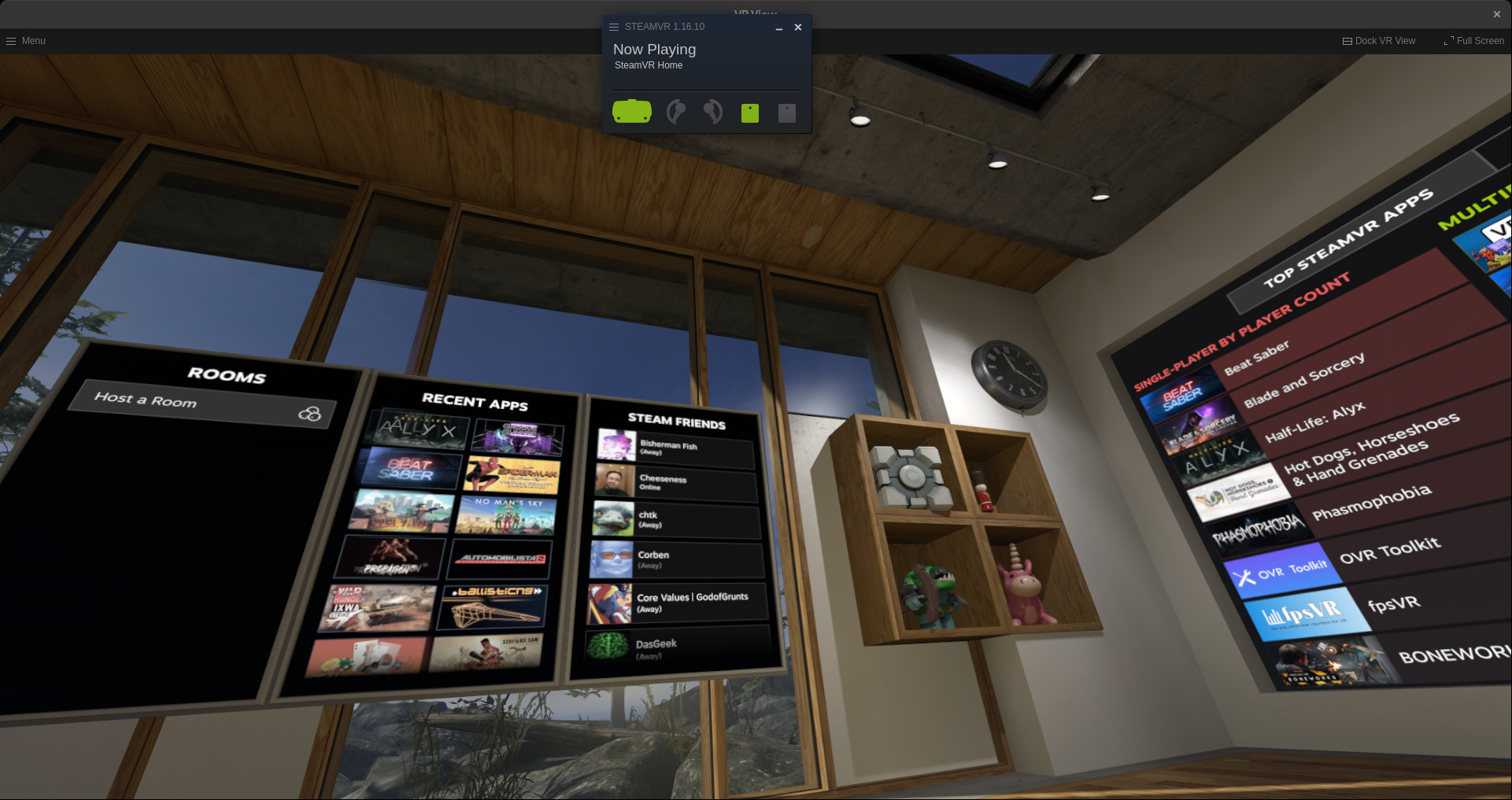

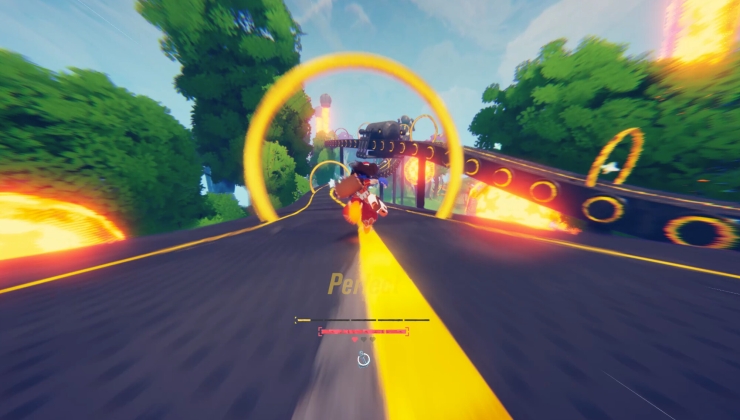
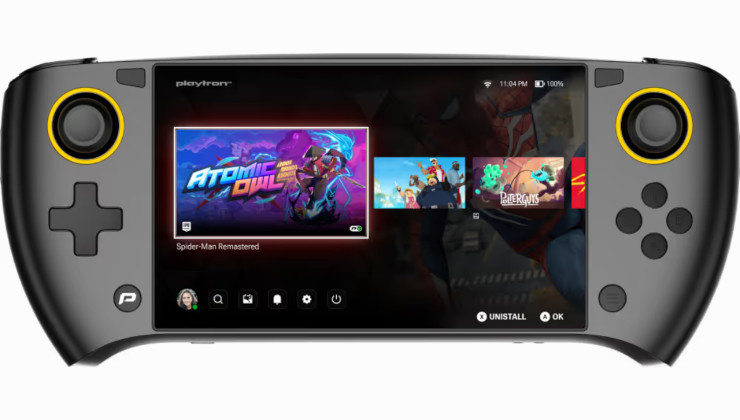
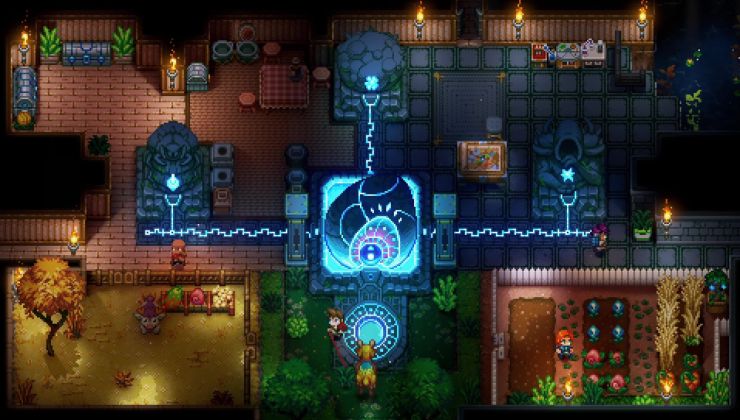
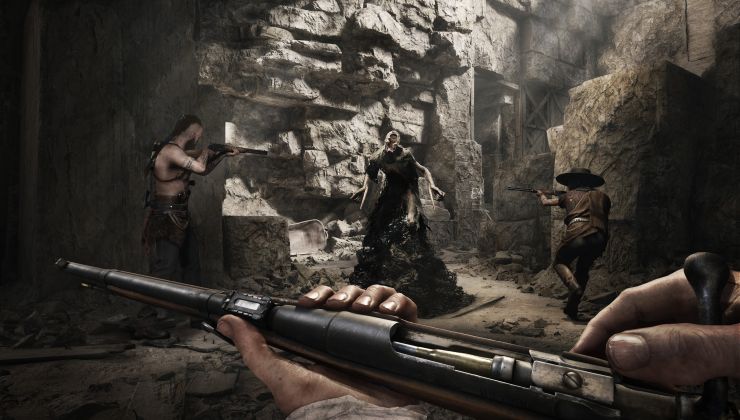







 How to set, change and reset your SteamOS / Steam Deck desktop sudo password
How to set, change and reset your SteamOS / Steam Deck desktop sudo password How to set up Decky Loader on Steam Deck / SteamOS for easy plugins
How to set up Decky Loader on Steam Deck / SteamOS for easy plugins
See more from me